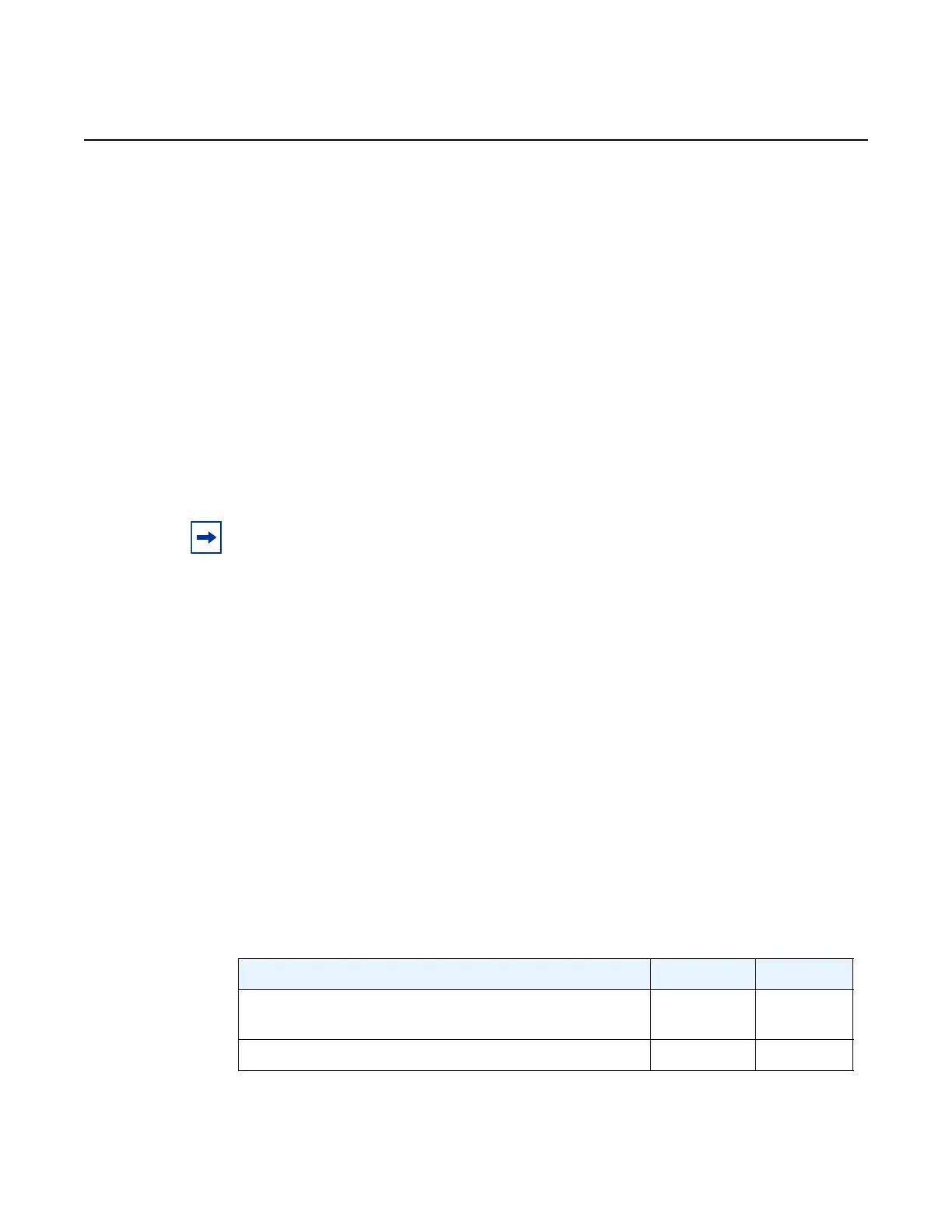Quality of Service Guide QoS and QoS Policies
Edition: 01 3HE 11014 AAAC TQZZA 75
3.2.3 Access Ingress Queuing and Scheduling
Traffic management on the 7705 SAR uses a packet-based implementation of the
dual leaky bucket model. Each queue has a guaranteed space limited with CBS and
a maximum depth limited with MBS. New packets are queued as they arrive. Any
packet that causes the MBS to be exceeded is discarded.
The packets in the queue are serviced by two different profiled (rate-based)
schedulers, the In-Profile and Out-of-Profile schedulers, where CIR traffic is
scheduled before PIR traffic. These two schedulers empty the queue continuously.
For 4-priority scheduling, rate-based schedulers (CIR and PIR) are combined with
queue-type schedulers (EXP or BE). For 16-priority scheduling, the rate-based
schedulers are combined with the strict priority schedulers (CoS-8 queue first to
CoS-1 queue last).
Access ingress scheduling is supported on the adapter cards and ports listed in
Table 8. The supported scheduling modes are 4-priority scheduling and 16-priority
scheduling. Table 8 shows which scheduling mode each card and port supports at
access ingress.
This section also contains information on the following topics:
• Profiled (Rate-based) Scheduling
• Queue-Type Scheduling
• 4-Priority Scheduling
• 4-Priority (Gen-3) Scheduling
• 16-Priority Scheduling
• Ingress Queuing and Scheduling for BMU Traffic
Note: For access ingress and egress, the 16-priority schedulers use additional hardware
resources and capabilities, which results in increased throughput.
Table 8 Scheduling Modes Supported by Adapter Cards and Ports at
Access Ingress
Adapter Card or Port 4-Priority 16-Priority
8-port Ethernet Adapter cards, versions 1 and 2 on the
7705 SAR-8 and version 2 on the 7705 SAR-18
✓
8-port Gigabit Ethernet Adapter card ✓✓

